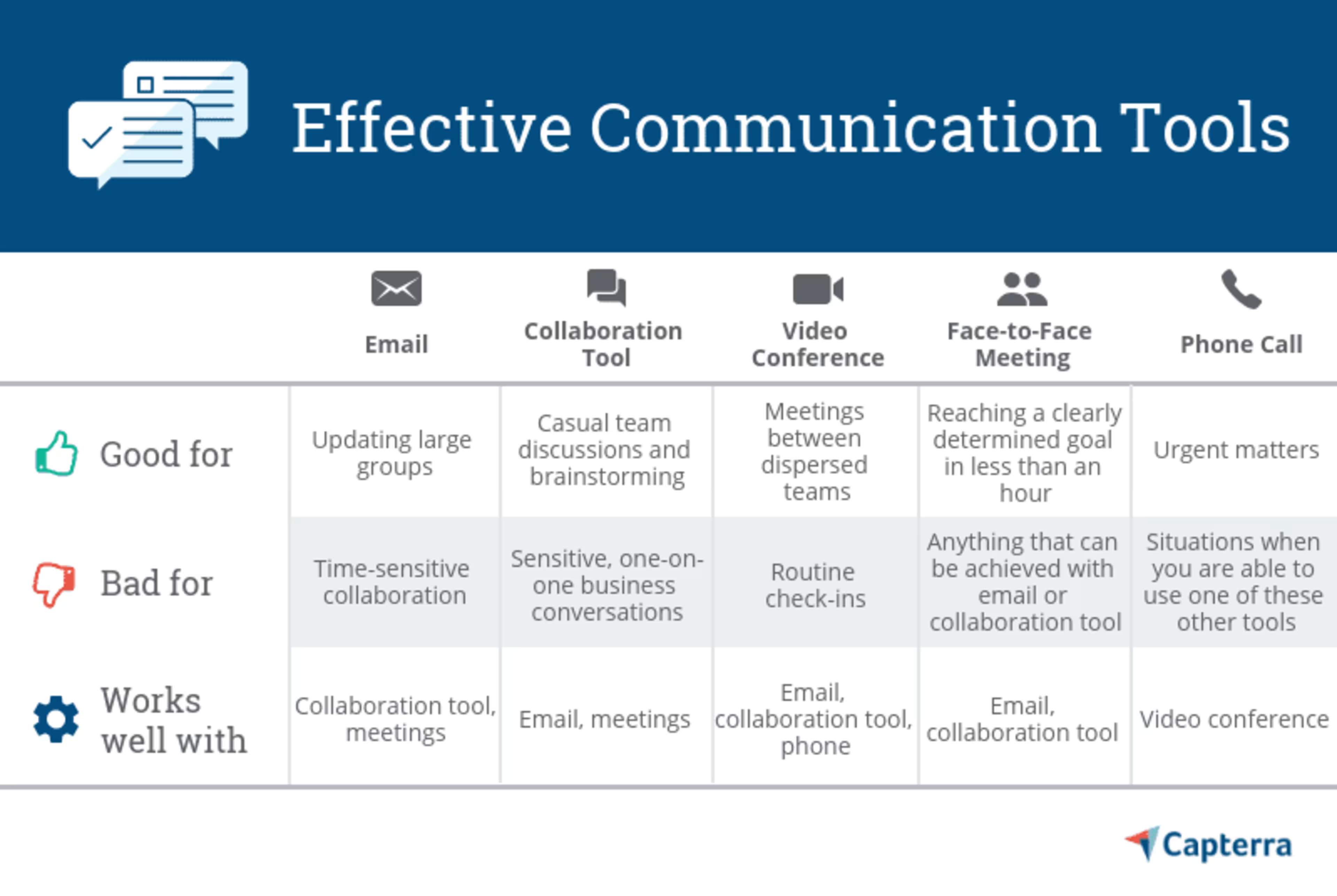A blueprint for building effective teams

What's the first thing you do when you hear this at a company workshop?
"Break into groups of three or four and work through the activity on the board. We'll reconvene in 20 minutes to share our results."
Do you immediately make eye contact with your friends in the room, forming an unspoken agreement to partner together? Or, do you turn to the people next to you and say, "How 'bout it," using proximity as your grouping mechanism?
Left to self-organize, most of us fall into one of those two camps. But here's the million-dollar question: Which team is more effective?
We spent most of our school-age years being separated from our friends during group breakouts to avoid "getting off task." So it might surprise you that studies show teams of friends are more productive than teams of non-friends or acquaintances.
This performance advantage is found across all age groups, and is actually more profound on large teams. So what exactly is it about friendship that makes teams more effective?
Why do friends make great teammates?
Friends have a clear performance advantage because they've spent time getting to know one another already and have bonded through sharing and mutual vulnerability. It's this connectedness and social capital that allows them to excel as teammates.
So, while friends do make great teammates, friendship itself isn't a requirement for high-performing teams. Rather, it's the components that form the basis for friendship (trust, respect, etc.) that are the same as those needed to build social capital in the workplace.
Organizations that recognize the connection between social capital and team effectiveness and take steps to foster this environment will see huge gains, including higher output, employee engagement, and even revenue.
And small changes can have a major impact. For example, a call center that rescheduled coffee breaks so that all employees took a break at the same time saw $15 million in productivity gains and a 10% increase in employee satisfaction.
Below, we highlight five critical aspects of social capital and provide recommendations for how you can use that information to build high-performing teams at your organization.
5 ways to improve team effectiveness
1. Take the time to build trust
Trust is at the core of every successful relationship, including those that make up project teams. Without trust, people cannot work together and achieve meaningful results.
Trust is built when we demonstrate behaviors in three areas:
Benevolence: Being kind and having others' best interests at heart.
Integrity: Being honest, reliable, and possessing good character, e.g., how you act when no one's watching.
Competence: Possessing the skills and knowledge required for a job.
It takes time to build trust, but it takes very little to erode trust once you demonstrate actions to the contrary. As John Blakey states in Management-Issues.com, trust is a formula involving multiplication, not addition:
benevolence × integrity × competence = trustworthiness
If you score a zero in any area, your trustworthiness will also be zero. Similarly, individuals that score highly on all three measures will be more trustworthy than someone who excels in two areas, but struggles with the third.
How to apply this practice on your team: Time is often in short supply, and yet it is critical to building trust. Help team members build trust by affording them time to get to know one another (e.g., shared coffee breaks, team outings, etc.).
Additionally, as a leader, you should take the time to recognize team members when they demonstrate behaviors in each of these areas. For example, praise someone that takes on more work to help a teammate meet a deadline, or recognize the efforts of someone that works hard to pilot a new project and/or learn a new skill.
2. Demonstrate empathy
Empathy is our ability to understand another person's experience and emotional state from their point of view, and respond accordingly—without a personal agenda. Possessing empathy is critical for teams, as it helps frame how we communicate and behave toward one another.
Empathy goes hand-in-hand with social sensitivity. The better you are at recognizing social contexts, reading nonverbal cues, and understanding subtle shifts in mood and demeanor, the more empathetic you will be to others' circumstances.
Empathy and social sensitivity allow teams to communicate more effectively, understand each other's strengths and weaknesses, and support and motivate each other through various highs and lows.
How to apply this practice with your team: Some people are inherently more empathetic than others. However, you can develop empathy (and help team members become more empathetic) by practicing emotional intelligence. Start by doing the following yourself, and then commend this behavior when you see it in your team as well:
Practice active listening—listening to understand, not just to answer.
Be vulnerable, which shows people it's safe for them to do the same,
Examine your attitude—do you care more about being right than being kind?
3. Know how to collaborate, not compete
High-performing teams know the difference between competition and collaboration. In order to collaborate and work together effectively, one individual's agenda cannot be more important than the group's, and team members have to believe that nobody wins unless everybody wins.
A collaborative mentality promotes sharing and helpfulness. As researcher Margaret Heffernan writes, "Helpful teams of people accelerate the sharing of knowledge and expertise; they don't let one another stay stuck or confused; they try to prevent problems before they arise, and they won't let colleagues become isolated or cut off."
On the other hand, competition creates silos, reduces helpfulness, and restricts knowledge sharing among individuals. While it may generate short-term results on the back of an individual's success, it compromises the long-term goals and productivity of a team. This is known as the "super chicken phenomenon"—where one individual excels at the expense of the others in the group, resulting in dysfunction and waste.
How to apply this practice with your team: First and foremost, take a step back and reflect on the type of behavior you merit. Do you commend individuals for their contributions, or teams for what they achieve together? Then, recognize the behavior that you want to grow.
Pitting individuals against each other for the sake of quick wins is deeply ingrained in our society. As such, shifting from a culture that values competition to one that promotes collaboration requires more than just lip service, and often requires leaders to buck convention.
For example, Pluralsight (a technology skills platform for software and IT professionals) recently decided to do away with sales commissions, merit-based rewards that are an industry standard. They now pay their sales team above-average market rates and measure the overall output of the sales channels on an ongoing basis, rather than measuring an individual salesperson's numbers in a given month.
4. Maintain a growth mindset
According to research by Carol Dweck, there are two main mindsets we see in individuals (and in teams and organizations): a fixed mindset and a growth mindset. A few key differences between the two include:
Fixed mindset: Believes innate abilities are set, possesses a desire to look smart (fear of failure), and is well-suited for individual mastery and problems requiring past experience.
Growth mindset: Believes intelligence and talent can be learned; possesses a desire to learn (failure is an opportunity to grow); and is well-suited for teamwork, collaboration, and problems requiring creativity and risk-taking.
Maintaining a growth mindset is crucial for teams. Not only does it promote continuous learning, but it also serves to reduce conflict while at the same time increasing debate. Teams with a growth mindset don't view questions as a sign of disrespect and actively seek constructive disagreement to ensure they're on the right track to the solution.
How to apply this practice with your team: Individuals and teams will tend toward the mindset that leaders value and exemplify. Simply put, if you want to promote a growth mindset, you need to first practice it, and then acknowledge, encourage, and reward that behavior in others. For example, don't measure performance only by success, but also on how much learning has occurred.
5. Establish a communication plan and tool hierarchy
The fifth and last secret of high-performing teams is that they have an established communication plan and tool hierarchy. Why? Because stating upfront which medium to use for which type of communication reduces redundancies, questions, and time lost from tool confusion.
Don't believe me? Thirty-three percent of respondents in a recent Planview survey said that they suffer from "communication chaos" that negatively impacts their productivity. This chaos is caused by having an abundance of tools available to them, but also a lack of guidance on how to use them collectively.
How to apply this practice with your team: Set guidelines. It's better to be overt with expectations than assume people will use a tool in the same way. For example: Use chat for anything not urgent or informal, use email for more formal inquiries, and have all project-related conversations in your shared PM tool.

(Source)